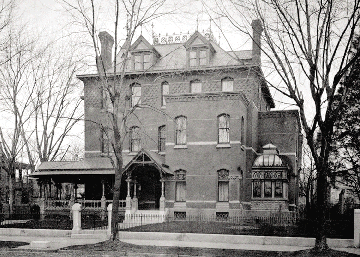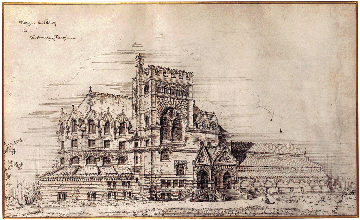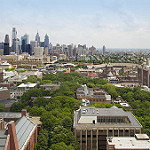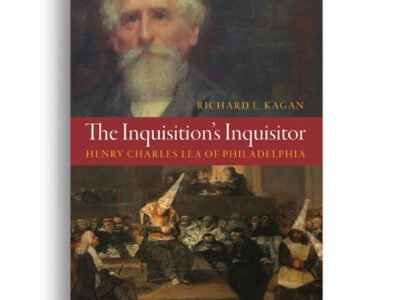A new architectural website offers everything you ever wanted to know about Philadelphia architecture.
Say you’re curious about a certain building in the Philadelphia area. You’ve just finished reading something about WXPN, for example, and you’re thinking about its old digs at 3905 Spruce St. So you log onto the Philadelphia Architects and Buildings (PAB) website (www.philadelphiabuildings.org), click Locations, then click Browse Philadelphia by Street List. After you make your way to the 3900 block of Spruce Street, you see, at 3905, a link labeled Potts Residence; Wayne Hall. The first thing you see when you click it is a small photo—from 1885. The building has a sort of post-Dickensian look to it, with a porch to the left of the front door and a widow’s walk on top, but it’s unmistakably the old WXPN building—or, if you’re of an earlier generation, Wayne Hall.

You’re just getting started. Click Chronology and you’ll find that it was built in 1850 and enlarged and remodeled in 1876 by Joseph M. Wilson, that its front porch was removed in 1943, that the first floor was damaged by fire in 1976, and that in 1977 it had some changes: Interior altered to offices, new stairs built, windows on north all bricked. Click Architects and you’ll find links to and biographical sketches of Wilson and the Wilson Bros. & Co., with more links to their other architectural projects. Other tidbits include a bibliographical list of references, a link to the Philadelphia Board of Revision of Taxes (which lists the building’s assessment value and “average” exterior condition), and a note that the building was placed on the Philadelphia Register of Historic Places in 1963. There’s more, but you get the idea.
Not all buildings in the Philadelphia area have that much detail, of course, though some—such as the Frank Furness-designed Fisher Fine Arts Library and the Richards Medical Research Laboratory of Louis I. Kahn Ar’24 Hon’71—have a great deal more. The website provides troves of information about some 217,000 architectural projects and 20,000 architects, 5,000 of whom have biographical sketches. It also features more than 58,000 images, ranging from photographs to blueprints to sketches. In a recent week, more than 103,000 people visited it.
The site represents a collaboration between the University’s Architectural Archives and the Athenaeum of Philadelphia, since joined by the Philadelphia Historical Commission, the Pennsylvania Historical and Museum Commission, and some three dozen other local cultural institutions. It also represents “a national model for creating and presenting authoritative building history resources,” in the words of its homepage.
The project began as an effort to update the “Old Testament” of Philadelphia architecture—the Biographical Dictionary of Philadelphia Architects: 1700-1930, published in 1985—and quickly morphed into something much larger.
“The project expanded tremendously from the book, because we could get so much more information on the Web,” says William Whitaker GAr’96, collections manager of Penn’s Architectural Archives. “It’s been a wonderful collaboration, and something that each of the different institutions individually could not do without the other.” They also probably could not have done it without the funding provided by the William Penn Foundation.
The Athenaeum’s collection, in particular, complements Penn’s. “We’re really sister institutions,” says Whitaker. “The Athenaeum has collections that focus on the 19th century; ours focuses on the 20th century. We came together as the two major partners for the project.”
Best of all, it’s free, although anyone wanting to access high-resolution images has to pay a yearly fee of $40. (The small, low-resolution images can be viewed at no cost.) “It was a desire on the part of all the institutions not to charge for the information,” says Whitaker.

The PAB site offers biographical sketches of some of the region’s most important architects, including Kahn, Furness, Paul Philippe Cret, William Strickland, and Wilson Eyre, to name just a few. (It also provides links to other reference works, such as Building America’s First University: An Historical and Architectural Guide to the University of Pennsylvania, by Penn faculty members George E. Thomas Gr’71 and David Brownlee.) Kahn is easily the most-visited architect on the website, with more than 50,000 hits. That comes as no surprise, given his international stature and the fact that his drawings form the centerpiece of the Architectural Archives’ holdings, which were started by the late G. Holmes Perkins Hon’72, former dean of the Graduate School of Fine Arts.
For architects and scholars researching individual buildings, the site can be invaluable. Whitaker mentions an architect he knows who’s been “struggling with an historic-structures report for the University Museum,” explaining that “there’s always been a question of who designed it and who did what, because there are three prominent Philadelphia firms associated with it.” By using the PAB, that architect was able to “discover some new possibilities about how one might understand who was doing what at one time.”
“What PAB doesn’t do is give you a museum exhibition,” Whitaker notes. “It won’t walk you step-by-step through the architectural history of Philadelphia in a way that a museum might do. It is a tool for people to discover more about the city—individual designers, areas of the city, the dates things were built—and really try to create their own history. And from the get-go, we’ve had people saying, ‘Wow! I had no idea that this stuff was out there.’ People who were just surfing the web, and then all of a sudden landed on this and discovered that somebody had drawings or photos for their houses. So it’s been tremendous for those people.”
Incidentally, the site has been “wonderful for the Architectural Archives and helpful in organizing our collection in a systematic way,” notes Whitaker. “Because once someone learns you have something, they’re going to follow up and ask you questions—‘Is there more information?’ and so on. So one has to be prepared. This website allows us to give people the additional information and follow up and find more resources, both published and archival. And that’s unique.”—S.H.




